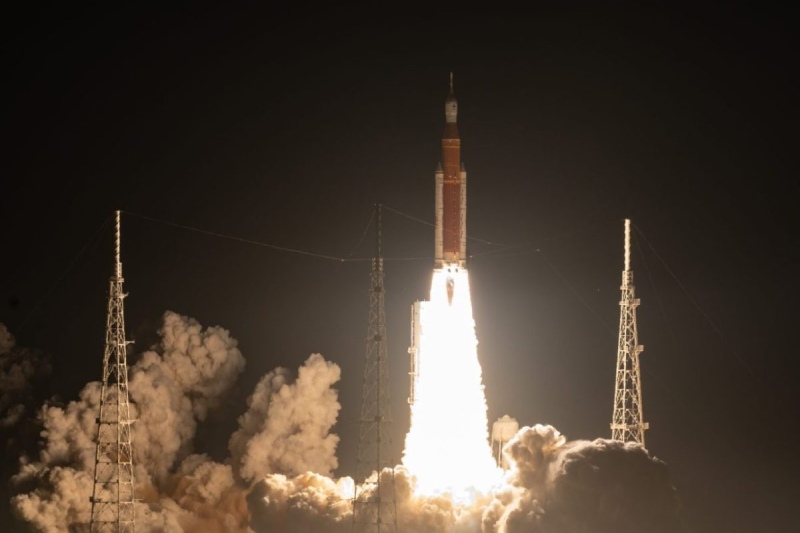NASA Bolstering SLS Lunar Rocket for Artemis Program

Although NASA hasn’t launched a mission to Mars as part of the Artemis moon program yet, the project is actively focused on improvements.
In the upcoming ten years, a more potent variant of the Space Launch System (SLS) will be launched for more ambitious lunar missions, beginning with Artemis 4. NASA intends to establish a settlement at the lunar south pole, and the larger version, known as Block 1B, can transport both humans and substantial amounts of gear towards the moon.
According to a recent statement from NASA, the enhanced SLS will have a “more powerful second stage and an adapter for large cargos.”
At NASA’s Stennis Space Center, testing is currently underway on the more potent RS-25 engines for SLS, which are an upgrade from the engine type originally created for the space shuttle program. In order to prepare for Artemis 5 and beyond, NASA is conducting a 12-engine hotfire certification series for the new RS-25 type, which includes multiple tests in March.
Eventually, the larger Artemis mission hopes to establish a permanent lunar settlement close to water ice resources. Under the NASA-led Artemis Accords, a coalition of countries is making the journey there; however, the majority of the 35 signatories have pledged to adhere to U.S.-led standards for peaceful space exploration rather than providing hardware.
In 2022, Artemis 1, an unmanned mission, completed a lunar orbit; astronaut flights will shortly follow. Artemis 3 intends to make a crewed landing in 2026, while Artemis 2 will transport four men around the moon no sooner than 2025. (The January debuts of Artemis 2 and 3 were postponed due to various technical issues, while development is still ongoing.)
According to NASA officials, the Orion spacecraft’s sole engine stage is boosted during the first three lunar missions by an interim cryogenic propulsion stage. The exploration upper stage (EUS), which has four engines, will be used for missions beginning with Artemis 4. A new battery that powers EUS for eight hours, four times longer than Artemis 1 and 3, is one of its advantages. Then, more potent RS-25 engines will be deployed on missions beginning with Artemis 5.
A universal stage adapter with greater storage capacity and over 10,000 cubic feet (286 cubic meters) of room to transport big components will also be available for Artemis 4 and later models. That leaves plenty of space for bulky objects, like the modules for NASA’s upcoming Gateway space station that will orbit the moon.
In addition to having greater space, NASA stated that the more potent EUS will enable twice-daily launches, which is more than the present design permits. The stage can be controlled and communicated with by both ground crews and astronauts after the crew reaches orbit. This will enable the Orion spacecraft they are piloting to “extract components destined for Gateway from the stage adapter,” according to official documentation.
While it works on Artemis, NASA will also be facing financial difficulties in the 2025 fiscal year, but administrator Bill Nelson has promised to fight for funds. If the White House request, which was presented this week, is approved by Congress in an election year, Artemis funding in the next fiscal year is expected to be roughly $7.6 billion, which is essentially unchanged from 2024 spending.